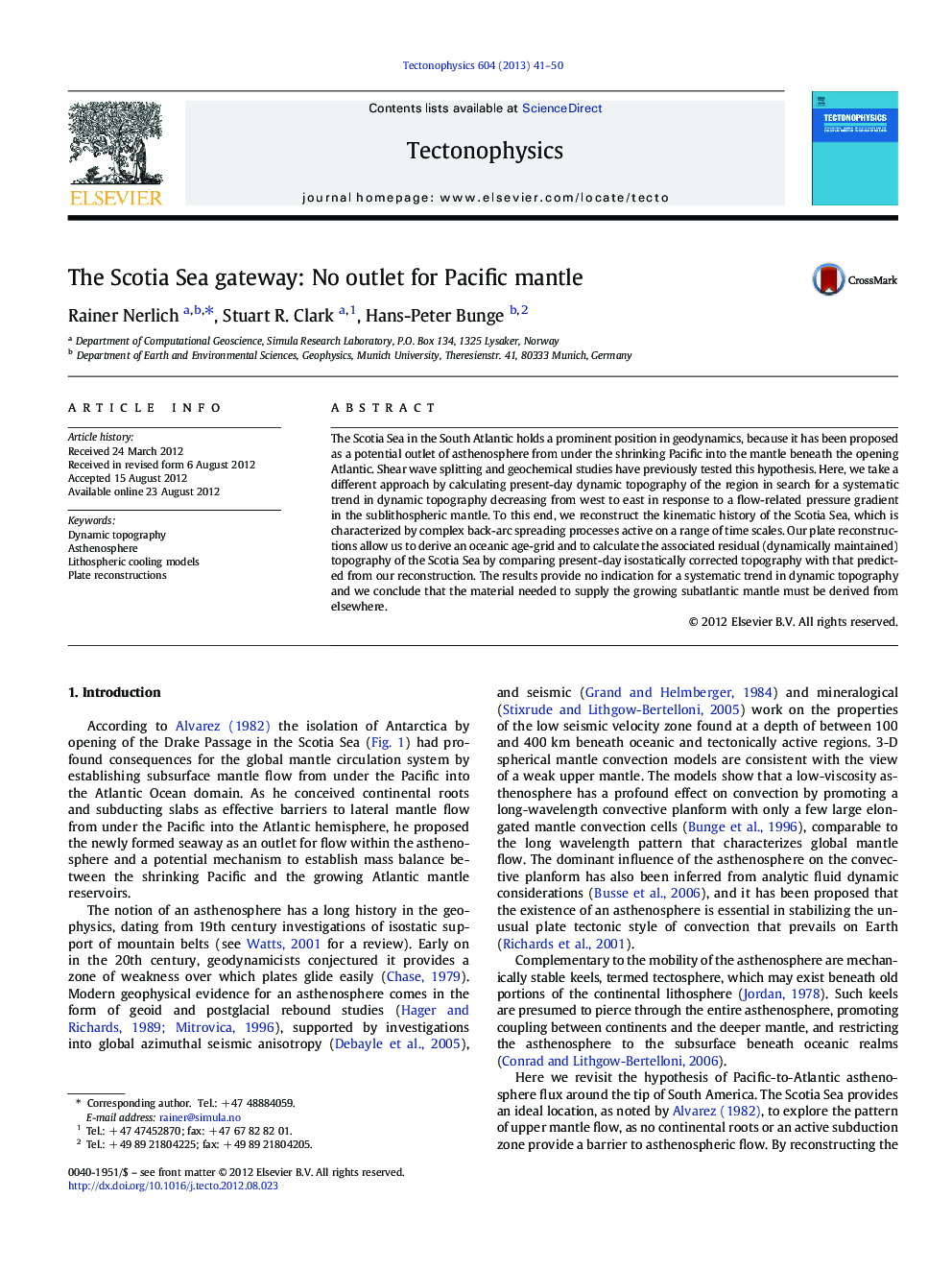| Article ID | Journal | Published Year | Pages | File Type |
|---|---|---|---|---|
| 4692150 | Tectonophysics | 2013 | 10 Pages |
The Scotia Sea in the South Atlantic holds a prominent position in geodynamics, because it has been proposed as a potential outlet of asthenosphere from under the shrinking Pacific into the mantle beneath the opening Atlantic. Shear wave splitting and geochemical studies have previously tested this hypothesis. Here, we take a different approach by calculating present-day dynamic topography of the region in search for a systematic trend in dynamic topography decreasing from west to east in response to a flow-related pressure gradient in the sublithospheric mantle. To this end, we reconstruct the kinematic history of the Scotia Sea, which is characterized by complex back-arc spreading processes active on a range of time scales. Our plate reconstructions allow us to derive an oceanic age-grid and to calculate the associated residual (dynamically maintained) topography of the Scotia Sea by comparing present-day isostatically corrected topography with that predicted from our reconstruction. The results provide no indication for a systematic trend in dynamic topography and we conclude that the material needed to supply the growing subatlantic mantle must be derived from elsewhere.
► No systematic east–west variation in dynamic topography through the Scotia Sea ► The Scotia Sea is not the mantle outlet of the Pacific as previously hypothesized ► Deep mantle processes achieve the mass balance between the Pacific and Atlantic
